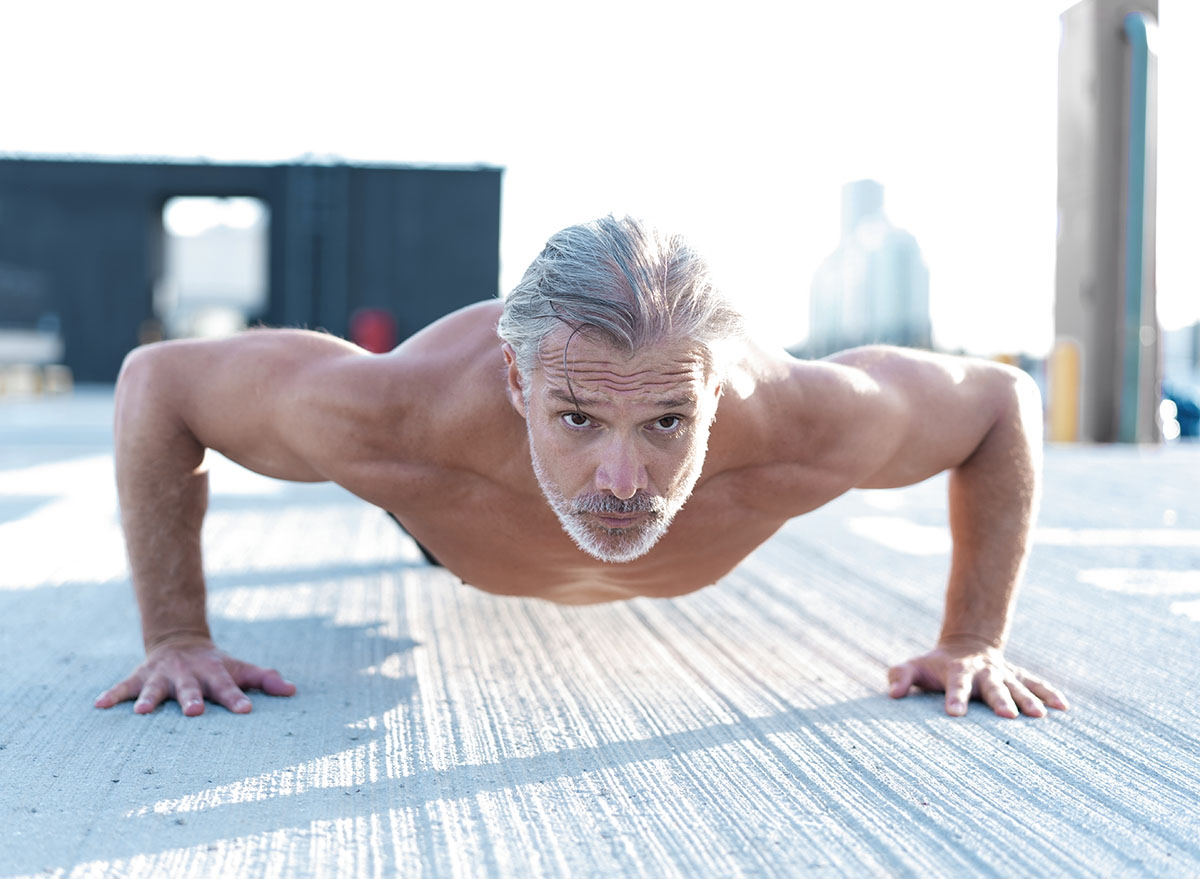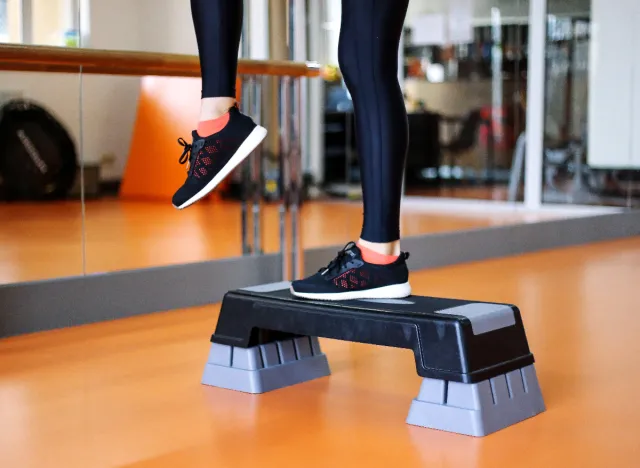6 Strength Exercises That Fight Aging Faster Than Cardio After 45, According to Trainers

Once you hit 45, strength training becomes one of the best things you can do for long-term health and wellness. While many tend to focus on cardio or general physical activity, resistance training is what keeps you “strong, mobile, and independent” with age, says Clif Marshall, senior director of coaching and pro training at D1 Training. So, we’ve rounded up the best strength exercises to start this week after 45.
Here’s why strength training really matters after 45.
“Once we reach our mid-40s, the body naturally begins to lose muscle mass and strength, which happens faster if someone remains inactive,” Marshall explains. “Muscles are metabolically active tissue, meaning they help regulate blood sugar, support hormone balance, and maintain a healthy metabolism. When muscle declines, metabolism slows, and it becomes easier to gain body fat even if your diet and activity levels stay the same.”
In addition, bone density declines, but resistance workouts place “healthy stress” on the bones, promoting new growth while decreasing the risk of injury and arthritis.
“Your muscles do not have eyes, so any form of resistance can work for strength training, including bodyweight, resistance bands, dumbbells, kettlebells or barbells,” Marshall tells us. “In short, strength training is one of the best ways to fight aging from the inside out.”
Julie Dermer, longtime master instructor at SoulCycle, lifestyle influencer, and leader in the fitness space, compares lifting weights—or training with just your body weight—to hitting the “refresh” button on your entire system.
“It keeps muscle on your frame, bones strong, metabolism fired up, and confidence high. Plus, it’s not just about how you look, it’s about moving with power and ease in every part of your life,” she explains.
6 Strength Exercises That Fight Aging After 45
Bodyweight Squats
The bodyweight squat is a classic strength move that fires up the legs, glutes, and core.
“This exercise builds lower-body strength and mobility, helping prevent falls and knee or hip issues,” Marshall says.
- Begin the exercise by standing tall with your feet shoulder-width apart.
- Extend your arms in front of you or place your hands on your hips.
- Bend at the knees and hips as you lower into a squat.
- Use control to descend until your thighs are parallel to the ground.
- Press through your heels to return to standing.
- Perform 3 sets of 12 to 15 reps.
Pushups
Pushups engage the chest, shoulders, triceps, and core, making them one of the most efficient bodyweight moves you can weave into your routine.
“This exercise strengthens the upper body and improves shoulder stability and posture,” Marshall explains, noting to keep your body straight as you lower and press back up.
- Assume a high plank position with your hands under your shoulders and your body straight.
- Bend your elbows and lower your chest toward the floor.
- Maintain a long, straight body as you lower.
- Press back up, straightening your arms.
- Perform 3 sets of 10 to 12 reps.
Glute Bridges
The glute bridge fires up your glutes, hamstrings, and lower back.
“This move supports lower-back health and hip strength, which supports the development of balance and pain-free movement,” Marshall notes.
- Lie flat on your back with bent knees and feet hip-width apart on the floor.
- Press through your heels to lift your hips until your body forms a straight line from head to heels.
- Squeeze your buttocks, holding at the top for a moment.
- Lower your hips back to the start position.
- Perform glute bridges for 3 sets of 15 reps.
RELATED: This 15-Minute Morning Routine Reverses Muscle Loss Faster Than Long Workouts After 45
Plank
The plank is an excellent test of core strength. This move engages the core, shoulders, and back.
“Planks build core endurance, which supports posture and reduces the risk of back pain,” Marshall says, noting to keep your body straight while maintaining a tight core throughout.
- Place your hands under your shoulders.
- Press into the pads of your fingers and hug your inner arm toward your armpit.
- Walk your feet out to hip-width.
- Engage your abs, squeeze your buttocks, and pull upward through your quads.
- Perform 3 sets of 20 to 45-second holds.
Bent-Over Rows
Bent-over rows activate the shoulders, biceps, and mid-to-upper back.
“This move strengthens the back and counteracts the forward posture common with aging and desk work,” Marshall says, stressing to pull the weights toward your ribcage, squeezing your shoulder blades together, and slowly lowering.
- Stand tall, feet hip-width apart and a dumbbell in each hand in front of you.
- Hinge at the hips until your torso is parallel to the ground.
- Maintain a flat back and soft knees.
- Allow the weights to lower with your arms completely extended.
- Row the dumbbells up toward your torso.
- Lower to the start position with control.
- Perform 3 sets of 10 to 12 reps.
Step-Ups

Step-ups are a simple move that targets the core, glutes, and legs.
“This exercise improves leg strength, balance, and coordination – important for preventing falls,” Marshall explains.
- Stand tall, feet parallel and hip-distance apart.
- Bring your hands to your hips.
- Step one foot forward.
- Engage your core as you bend your knees, lowering to form 90-degree bends in both legs.
- Keep your upper body straight.
- Press through your front heel and the ball of your back foot to rise back up.
- Perform 3 sets of 10 reps on each leg.